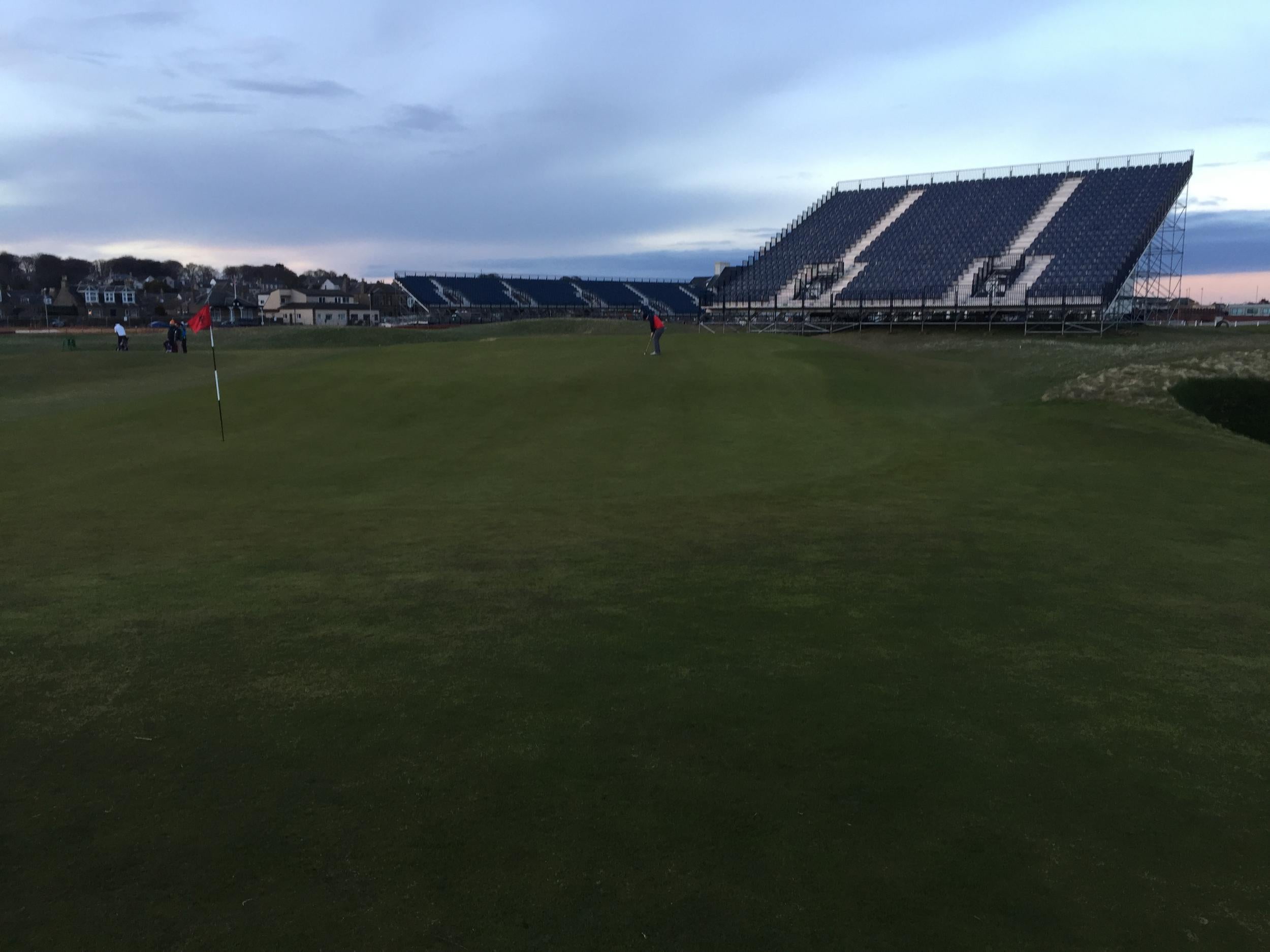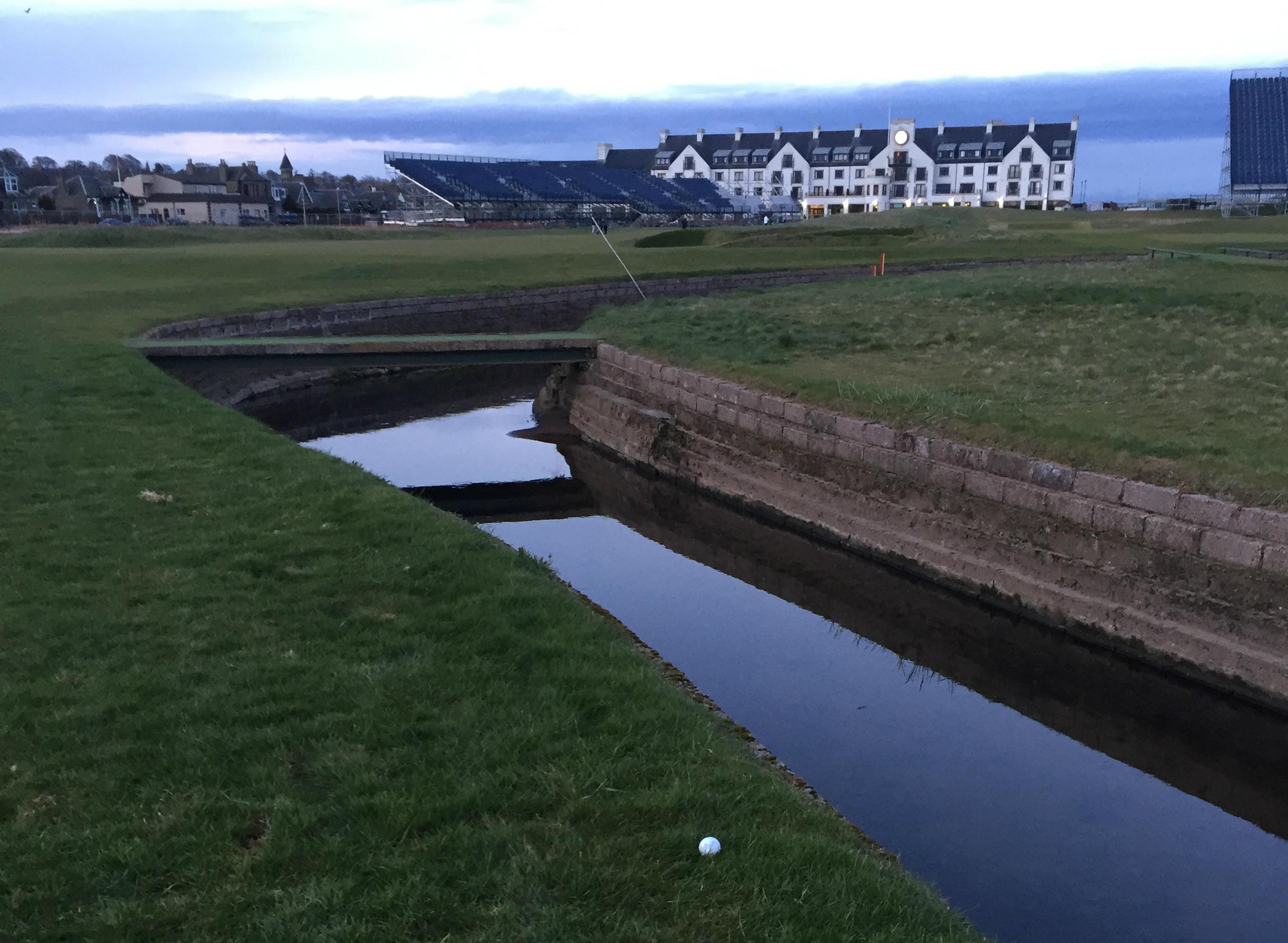The Open 2018: Carnoustie's closing holes - a guide to avoiding lost balls
The Independent spoke to Carnoustie's head pro Colin Sinclair for his veteran advice on how to play numbers 15, 16, 17 and 18

Your support helps us to tell the story
From reproductive rights to climate change to Big Tech, The Independent is on the ground when the story is developing. Whether it's investigating the financials of Elon Musk's pro-Trump PAC or producing our latest documentary, 'The A Word', which shines a light on the American women fighting for reproductive rights, we know how important it is to parse out the facts from the messaging.
At such a critical moment in US history, we need reporters on the ground. Your donation allows us to keep sending journalists to speak to both sides of the story.
The Independent is trusted by Americans across the entire political spectrum. And unlike many other quality news outlets, we choose not to lock Americans out of our reporting and analysis with paywalls. We believe quality journalism should be available to everyone, paid for by those who can afford it.
Your support makes all the difference.The Open Championship is never a tournament where you can claim a win by the 9th hole...the Open Championship at Carnoustie is a whole another challenge.
Widely regarded as the hardest course on the Open rota due in large part to its last four holes.
Having played the last four holes myself in the run up to the 147th Open - I can safely say I was very proud to bogey 15,16,17 and 18.
The Independent spoke to Carnoustie head pro Colin Sinclair on the advice he would offer amateurs and pros alike on how to avoid a meltdown late in the round . After decades at the Links - this being his third Open - if anyone has an understanding of the course it is Colin.
On the subject of what style of golf is best suited to Carnoustie, Colin said: ‘You don’t have to be a fader or a drawer, you just have to be accurate’.
He explained the one shot needed, if a player is to get a chance at a low score, is driving off the tee: “You’ve got to be such a good driver of the ball here. You look at Paul Lawrie, Mr Hogan and Mr Watson [Winners in 1999, 1953 and 1975 respectively] they were accurate drivers of the golf ball."

Carnoustie has been one of the host courses of the Dunhill Links Championship since 2001 giving a real advantage to European Tour players attuned to its subtleties - as Colin stated: 'Local knowledge is everything."
Boiled down to one attribute essential to picking up the claret jug - Colin said in typical Scottish brevity: "You have to be canny."
Elaborating, he explained this is not a course for bombers, but for players who understand when they can be aggressive and when they need to play safe.
Now down to business - our guide to four incredibly tough holes:
15th - Lucky Slap
Par 4
472 yards
Armed with the toughest green on the course - whose mini contours are never fully observable- this par 4 is also equipped with some mean bunkers.
The lack of a burn in play should not be interpreted that this hole allows any prisoners to escape alive.
Colin advises all amateurs to hit their drives to the left hand side of the fairway, taking into its camber dragging the balls down to the bunkers on the right akin to Captain Hook and the crocodiles jaws (his analogy).
Lay up with your second shot effectively playing the hole as a par 5.
Pro's are simply advised to find the fairway - do not get caught in the hazards to the right and accept a two putt par.
16th - Barry Burn
Par 3
248 yards

This brute was described by five-time Open champ Tom Watson as the hardest par 3 in golf.
His comment is not to be scoffed at with many an amateur hitting a three wood short left to avoid the five destructive bunkers aimed at snaffling your ball.
Amateurs are advised to take a 4 on the hole and smile after doing so.
For pros, Colin says landing the ball near the pin on the hyper-long green is essential if they hope to snag a par.
17th - Island
Par 4
461 yards

From a personal note - I thought I had hit my tee shot straight into the Barry Burn...turned out I had landed onto one of the concrete bridges over the water bouncing forward another 110 yards...Lady Luck was truly shining on me.
Back to the task at hand, 17 is called Island because the aforementioned burn encircles a large chunk of fairway like a hungry snake.
Players of all abilities are forced to land their ball in the middle, allowing for the second shot into the green of 165+ yards.
Amateurs are advised to aim for a bogey-5 while Colin makes it clear it is a terribly risky shot for pros to attempt clearing both burns from the tee.
The mantra of conservative play continues...but as all golfers know there is always the nagging urge to go for glory.
18th - Home
Par 4
499 yards

Many amateurs may feel aggrieved that the 18th is not a par 5. Golfers are required to hit their tee shot over the burn and avoid landing into the same smiling watery hazard either side of the fairway.
The second shot is either a sensible laying up before the burn protecting the front of the green or going for a near suicidal long iron onto a green that slopes straight out of bounds through the back.
As a delusional amateur I took my 3 iron out to go for the green in front of the hotel clock - only to be wisely cautioned to hit my 8 iron short of the burn allowing me to cash in a solid bogey.
Colin [jokingly] advises a 'wee prayer' on the tee for amateurs and pros looking to protect their score before aiming to land it in the middle of the fairway

This is a definite driver hole for pros (excepting the likes of DJ, McIlroy and Garcia) with inaccuracy rewarded with ugly sand traps and dunes.
Their second shot, especially if hitting into the wind , is a true mental test of softly landing the ball anywhere on the green.
In conclusion: Pros that par these holes and amateurs who leave the course having bogeyed them - should feel satisfied.
Join our commenting forum
Join thought-provoking conversations, follow other Independent readers and see their replies
Comments